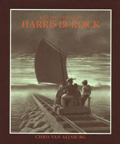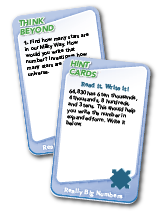Search Listing Name
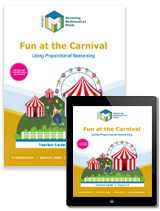
product:
Project M3: Level 5-6: Fun at the Carnival: Using Proportional Reasoning Teacher Guide + 3 Year License
In this unit, students are introduced to ratios, rates, proportional reasoning, similarity and congruence. Students explore ratio as a comparison of two quantities. They discover that if the ratio between the corresponding side lengths and angle measures of two figures is 1:1 (i.e., the measures are identical), then the geometric figures are congruent. They learn that for two figures to be similar, their corresponding side lengths must be in proportion and their corresponding angles must be congruent. Students also explore the relationship between congruence and similarity, learning that al
product:
Mind Over Matter: Exploring Critical Thinking Skills
This curriculum is designed to collect data, analyze data, search for the truth, and think for themselves. This curriculum is also designed to support the social and emotional needs of today’s teen. Socially, this curriculum helps students and teachers build relationships with specifically designed interactions, activities, and lessons. Positive social interactions require healthy relationships. This curriculum is designed to get students talking to one another by using strategies targeting teamwork, collaboration, compassion, and empathy. Emotionally, students learn strategies to talk abou
product:
The Myth Keepers
In 3570, scientists discover that more creatures are sharing the galaxy with humans: namely the Awentys and the Jaspiters. The Awentys have three eyes and flaming red skin; the Jaspiters have blue and green skin and a tail made of thorns. A few years later, scientists discover evidence that mythological creatures and deities might exist, yet they cannot guess who and where they are. But little do the humans know that Awentys are not so friendly. It starts secretly, but soon it becomes clear that Awentys want to

product:
Illustrative Mathematics: Kindergarten Spanish Student Edition Set
Illustrative Mathematics K-5 MathTM is an IM Certified product providing trusted, highly rated materials to ensure students thrive in mathematics. Each Illustrative Mathematics lesson has four phases, from pre-unit practice modules to cool downs, focusing students’ attention on definitions, notations, and graphical conventions contributing to the development of real numbers.
The big ideas in kindergarten include: representing and comparing whole numbers, initially with sets of objects; understanding and applying addition and subtraction; and describing shapes
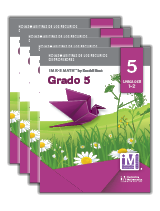
product:
Illustrative Mathematics: Grade 5 Spanish Teacher Resource Copy Master Set
Illustrative Mathematics K-5 MathTM is an IM Certified product providing trusted, highly rated materials to ensure students thrive in mathematics. Each Illustrative Mathematics lesson has four phases, from pre-unit practice modules to cool downs, focusing students’ attention on definitions, notations, and graphical conventions contributing to the development of real numbers.
The big ideas in
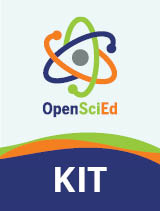
product:
Open SciEd Grade 3 Unit 2: Weather & Hazards Consumable Kit
Extend hands-on science learning in your classroom with aligned manipulative kits for
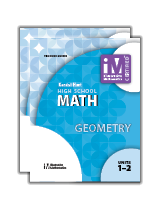
product:
Illustrative Mathematics: Geometry Student Edition Set
IM Geometry is problem-based core curriculum rooted in content and practice standards to foster learning and achievement for all. Students learn by doing math, solving problems in mathematical and real-world contexts, and constructing arguments using precise language. Teachers can shift their instruction and facilitate student learning with high-leverage routines that guide them in understanding and making connections between concepts and procedures.
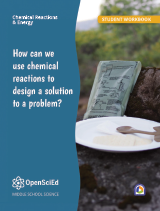
product:
OpenSciEd Unit 7.2: Chemical Reactions (B) & Energy Student Workbook
OpenSciEd Middle School science program addresses all middle school NGSS standards. This comprehensive science curriculum empowers students to question, design, investigate, and solve the world around them.
- Phenomenon Based - Centered around exploring phenomena or solving problems
- Driven by Student Questions - Storyline based on students’ questions and ideas
- Grounded in Evidence - Incremental building and revision of ideas based on evidence
- Collaborative - class and teacher figure

